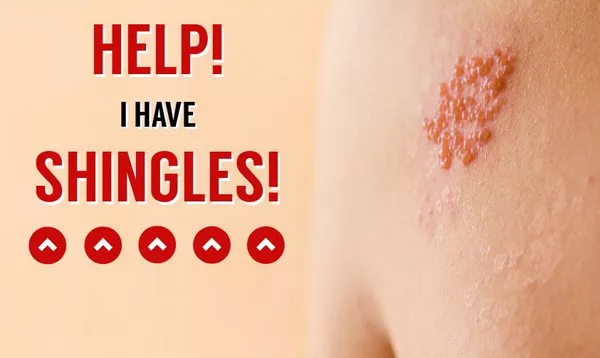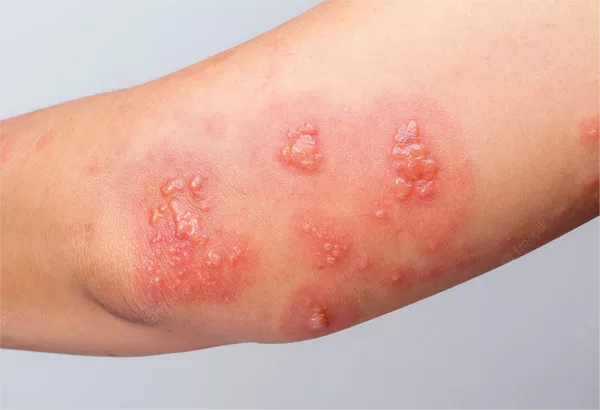Shingles, also known as herpes zoster, is a painful skin rash caused by the reactivation of the varicella-zoster virus, the same virus responsible for chickenpox. After a person recovers from chickenpox, the virus remains dormant in the nerve tissue near the spinal cord and brain. Years later, the virus may reactivate as shingles. This condition is characterized by a painful rash, often on one side of the body or face, accompanied by itching, burning, or tingling sensations.
Shingles can affect anyone who has had chickenpox, but it is more common in older adults and individuals with weakened immune systems. Early symptoms include fever, headache, and fatigue, followed by the appearance of a red rash that develops into fluid-filled blisters. Managing the discomfort and preventing complications are primary concerns during a shingles outbreak. Here, we explore various remedies and treatments that can be applied to alleviate symptoms and promote healing.
Topical Treatments: Over-the-Counter and Prescription Options
One of the first steps in managing a shingles outbreak is to use topical treatments. These can provide relief from pain and itching, reduce inflammation, and help prevent infection.
1. Calamine Lotion: Calamine lotion is a popular over-the-counter option that can soothe the skin and reduce itching. It has a cooling effect that can provide temporary relief. Applying calamine lotion to the rash several times a day can help keep the area dry and reduce discomfort.
2. Capsaicin Cream: Derived from chili peppers, capsaicin cream can be effective in reducing pain. It works by depleting substance P, a neurochemical that transmits pain signals to the brain. Applying a small amount of capsaicin cream to the affected area can help manage shingles-related pain. However, it is important to wash hands thoroughly after application and avoid contact with the eyes or mucous membranes.
3. Topical Lidocaine: Available in various forms, including creams, gels, and patches, lidocaine provides local anesthesia to numb the skin. This can significantly reduce pain and discomfort. Lidocaine patches, in particular, can be applied to the rash and left in place for several hours to provide continuous relief.
4. Antiviral Creams: While oral antiviral medications are more commonly prescribed, topical antiviral creams can also be used to reduce the severity and duration of a shingles outbreak. These creams help to inhibit the replication of the virus and can be particularly useful when applied early in the course of the infection.
Oral Medications: Antivirals, Pain Relievers, and Steroids
Oral medications play a crucial role in the management of shingles, particularly in reducing the duration and severity of the outbreak and preventing complications.
1. Antiviral Drugs: Antiviral medications, such as acyclovir, valacyclovir, and famciclovir, are most effective when started within 72 hours of the onset of symptoms. These drugs work by inhibiting the replication of the virus, thereby reducing the duration of the rash and the severity of symptoms. They also lower the risk of complications, such as postherpetic neuralgia (PHN), a condition characterized by persistent pain after the rash has healed.
2. Pain Relievers: Over-the-counter pain relievers, such as acetaminophen and ibuprofen, can help manage the pain and discomfort associated with shingles. For more severe pain, prescription medications, including opioids, may be necessary. However, due to the risk of addiction and side effects, opioids should be used with caution and under the supervision of a healthcare provider.
3. Corticosteroids: In some cases, corticosteroids may be prescribed to reduce inflammation and pain. These are typically used in conjunction with antiviral medications. Corticosteroids can help alleviate swelling and discomfort, but their use should be carefully monitored due to potential side effects, especially in individuals with other underlying health conditions.
SEE ALSO: Is Chickenpox Truly Related to Herpes?
Home Remedies: Natural Solutions for Symptom Relief
In addition to conventional treatments, several home remedies can provide relief from the symptoms of shingles. These natural solutions can be used alongside prescribed medications to enhance comfort and promote healing.
1. Cool Compresses: Applying cool, wet compresses to the affected area can help reduce pain and inflammation. The cooling sensation can also alleviate itching. To use a cool compress, soak a clean cloth in cool water, wring it out, and apply it to the rash for 15-20 minutes several times a day.
2. Oatmeal Baths: Oatmeal baths are a soothing way to relieve itching and discomfort. Colloidal oatmeal, which is finely ground oatmeal, can be added to a lukewarm bath. Soaking in the bath for 15-20 minutes can provide relief from itching and help keep the skin hydrated.
3. Baking Soda and Cornstarch Paste: A paste made from baking soda or cornstarch mixed with water can help dry out the blisters and reduce itching. Apply the paste to the rash and leave it on for 10-15 minutes before rinsing off with cool water. This can be repeated several times a day as needed.
4. Essential Oils: Certain essential oils, such as tea tree oil and lavender oil, have antiviral and anti-inflammatory properties. Diluting these oils with a carrier oil, such as coconut oil, and applying them to the rash can provide relief from itching and promote healing. However, essential oils should be used with caution, as they can cause skin irritation in some individuals.
Preventive Measures and Vaccination
Preventing shingles is an important aspect of managing the condition, especially for those at higher risk. Vaccination is a key preventive measure.
1. Shingles Vaccine: The shingles vaccine, such as Shingrix, is recommended for adults over the age of 50 and for those with weakened immune systems. Shingrix is highly effective in preventing shingles and its complications. It is administered in two doses, with the second dose given 2 to 6 months after the first. The vaccine can reduce the risk of developing shingles by more than 90% and is also effective in reducing the severity and duration of symptoms if shingles does occur.
2. Healthy Lifestyle: Maintaining a healthy lifestyle can help strengthen the immune system and reduce the risk of shingles. This includes eating a balanced diet, exercising regularly, getting adequate sleep, and managing stress. Chronic stress and fatigue can weaken the immune system, making it easier for the varicella-zoster virus to reactivate.
3. Avoiding Triggers: Identifying and avoiding potential triggers that could weaken the immune system can help prevent a shingles outbreak. Common triggers include illness, injury, and emotional stress. Taking steps to minimize these triggers can be beneficial.
Complications of Shingles and Long-Term Management
While most cases of shingles resolve within a few weeks, some individuals may experience complications that require long-term management.
1. Postherpetic Neuralgia (PHN): PHN is the most common complication of shingles, characterized by persistent pain in the area where the rash occurred. This pain can last for months or even years after the rash has healed. Managing PHN often requires a combination of treatments, including pain relievers, anticonvulsants, antidepressants, and topical agents.
2. Vision and Hearing Issues: If shingles affects the face, it can lead to complications involving the eyes and ears. Ophthalmic shingles can cause vision problems, including inflammation of the eye and even vision loss if not treated promptly. Shingles affecting the ear, known as Ramsay Hunt syndrome, can result in hearing loss and facial paralysis. Immediate medical attention is crucial in these cases.
3. Skin Infections: Secondary bacterial infections can occur if the shingles blisters are not properly cared for. Keeping the rash clean and dry, and avoiding scratching, can help prevent these infections. If a bacterial infection is suspected, a healthcare provider may prescribe antibiotics.
Conclusion
Managing a shingles outbreak involves a combination of topical treatments, oral medications, home remedies, and preventive measures. Early intervention with antiviral drugs can significantly reduce the duration and severity of the outbreak, while pain relievers and corticosteroids can help manage symptoms. Home remedies, such as cool compresses and oatmeal baths, can provide additional relief.
Preventive measures, particularly vaccination, play a crucial role in reducing the risk of shingles and its complications. For those who do experience complications, such as postherpetic neuralgia or vision issues, ongoing medical care is essential.
By understanding the various treatment options and taking proactive steps to strengthen the immune system, individuals can effectively manage shingles outbreaks and minimize their impact on daily life.
Related Topics:


























